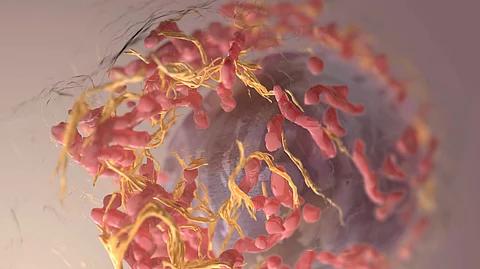

A collaborative study undertaken by the Navarrabiomed Biomedical Research Center (Pamplona, Navarre), the Institute of Neurosciences CSIC-UMH (Sant Joan d’Alacant, Valencian Community) and IRB Barcelona (Barcelona, Catalonia) shows that the administration of ranolazine, a drug currently used to treat heart conditions, improves the efficacy of current therapies for melanoma, in mouse models of this disease.
The journal Nature Metabolism has published the results of the study, which offers an alternative therapeutic approach to treat melanoma, the most deadly type of skin cancer, which affects 16.3 women and 14.6 men per 100,000 inhabitants in Spain.
The development of future clinical trials to validate and confirm the action of ranolazine in cancer patients will be facilitated by the fact that it has already been approved for use in humans and is being administered in clinical practice to treat chronic angina.
In most cases, patients with melanoma respond well to therapies directed against one of the key genes in tumour progression, namely BRAF. However, they soon develop resistance to these therapies and the tumours grow back. In addition, the latest clinical studies suggest that these patients show a poorer response to immunotherapy.
This study has provided a deeper understanding of the role of fatty acid metabolism in the development of resistance to BRAF inhibitors and demonstrated the capacity of ranolazine to slow down tumour progression. More importantly, this drug increases the visibility of melanoma cells to the immune system, thereby improving response to immunotherapies and increasing the ability of lymphocytes to control tumour growth.
The research has been coordinated from Navarrabiomed by Dr. Imanol Arozarena Martinicorena, head of the Cancer Signaling Unit, and is part of the doctoral thesis by Marta Redondo Muñoz (Public University of Navarre), a researcher in the same unit.
The work has been carried out in close collaboration with the Institute of Neurosciences, involving Dr. Francisco Javier Rodríguez-Baena, under the direction of Dr. Berta Sánchez Laorden, principal investigator of the Cellular Plasticity in Development and Disease group, and with IRB Barcelona, where the ICREA researcher Dr. Salvador Aznar Benitah leads the Stem Cells and Cancer lab, as well as the translational laboratory Systemic Metabolic Alterations in Cancer.
Navarrabiomed has designed and managed the development of the project, and also carried out experiments related to resistance to targeted therapies and the study of how ranolazine affects the immunogenicity of melanoma cells.
The Institute of Neurosciences (a joint centre of the CSIC and the Miguel Hernández University), conducted the immunotherapy trials with mice and the study of immune cells in the tumour microenvironment.
Scientists at IRB Barcelona performed single-cell RNA sequencing analyses, which have revealed in detail the effect of ranolazine on the metabolic state of tumour cells.
In 2022, 7,500 new cases of skin melanoma were diagnosed in Spain. Worldwide, this type of cancer accounts for 3.4% of the total number of cancer cases detected. Despite accounting for only 10% of skin cancer cases, melanoma is responsible for 90% of deaths associated with skin tumours.
Thanks to the development of targeted therapies and immunotherapies, the clinical treatment of individuals with melanoma has improved, but 50% of patients are still unresponsive and/or acquire resistance to these therapies. The combination of current therapies with ranolazine would offer a therapeutic alternative for these patients, improving their clinical response. (IB/NW)
